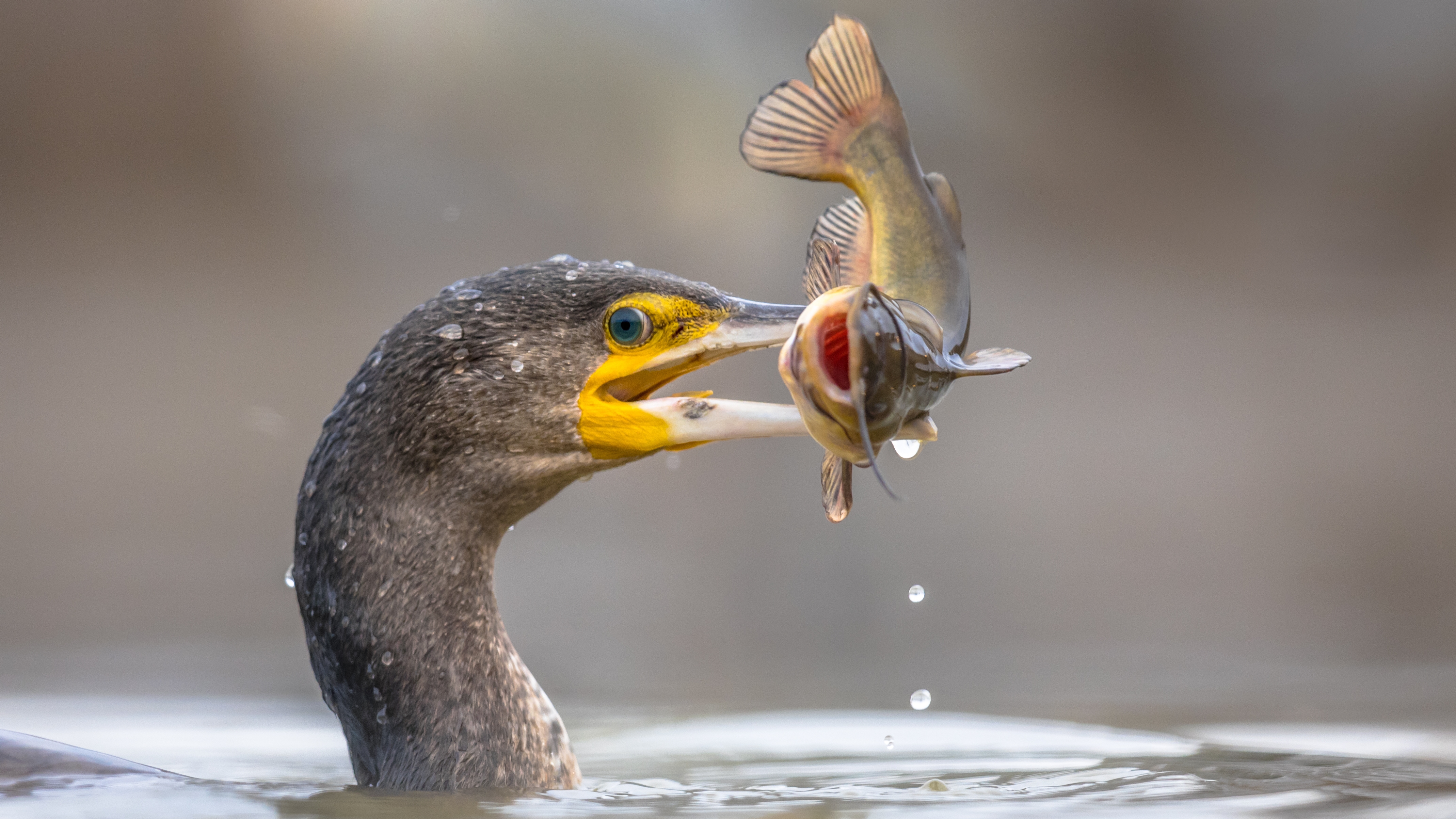NWRC Research Areas: Aquaculture

National Wildlife Research Center (NWRC) scientists are defining economic impacts and developing strategies for reducing avian predation in aquaculture.
Much of the catfish served in the United States was grown in an aquaculture facility instead of being caught from rivers or lakes. Aquaculture, the commercial production of fish and shellfish for food, is an increasingly important type of agriculture, especially in the southeastern United States. Unfortunately, fish-eating birds such as American white pelicans, double-crested cormorants, great blue herons, and great egrets are attracted to the pond-based and open-water facilities found in aquaculture areas. These birds feed upon fish, shellfish, shrimp, and crayfish produced in aquaculture facilities, often causing significant losses. In fact, cormorant depredation on catfish caused industry-wide sales losses of $47.2 million.
Because of the extensive losses suffered by aquaculture producers, NWRC established a field station in Starkville, MS, in 1988 to research not only the economic impacts but details around bird predation and how to minimize or prevent it. NWRC scientists with the aquaculture research project study captive and free-ranging birds to better understand what conditions or behaviors influence predation rates. For example, scientists are looking at bird foraging patterns, bird population distributions, preferred prey size, and a host of other factors that may influence how much product is lost to bird predators. Additional studies are looking at the role birds play in transmission of catfish diseases and parasites. Ultimately, these studies will provide data that will promote innovative approaches to reducing bird predation impacts on aquaculture.
Project Goals and Objectives
Goal: Develop an understanding of the economic impacts of damage inflicted on aquaculture production systems by cormorants, pelicans, wading birds, and waterfowl and develop tools and techniques for reducing that damage
Objectives:
- Evaluate ecological and economic impacts of fish-eating birds to commercial resources (e.g., aquaculture) and natural resources (e.g., sport fisheries, habitat)
- Develop tools and technologies to aid Wildlife Services operations, aquaculture producers, and natural resource managers in reducing avian impacts to aquaculture and natural resources
- Evaluate the role and impacts of fish‐eating birds in the epidemiology of diseases, parasites, and damage impacting commercial (e.g., aquaculture) and natural resources (e.g., sport fisheries).
- Evaluate fish‐eating bird population demographics, distribution, and movements in relation to aquaculture and natural resources
- Provide research assistance to Wildlife Services operations, stakeholders, and other NWRC projects
Related Links
Contact Us
Brian Dorr
Research Wildlife Biologist
Scales Building, Rm. 103, (P.O. Box 6099) 125 Stone Blvd.
Mississippi State University, MS 39762

